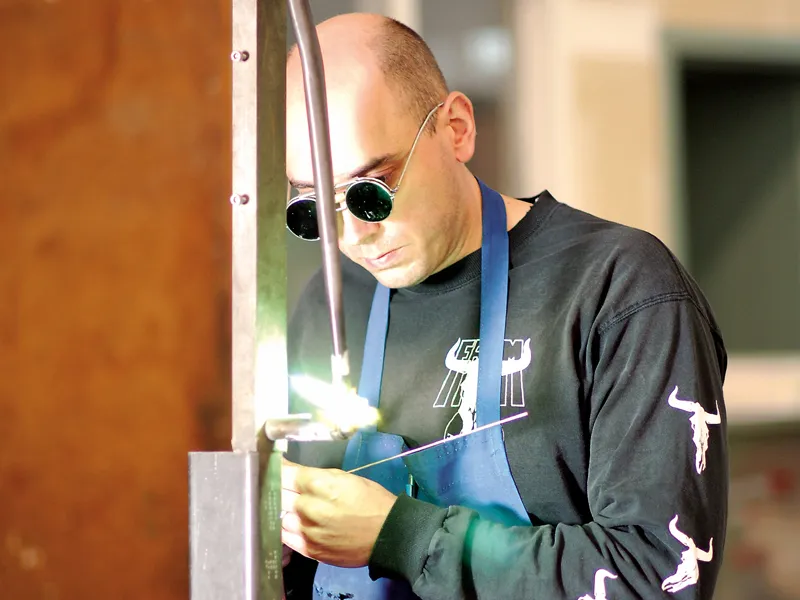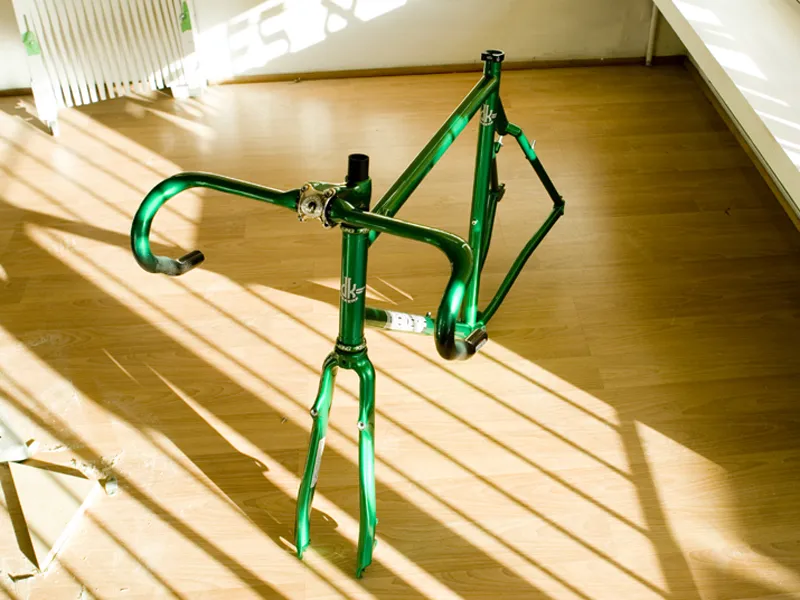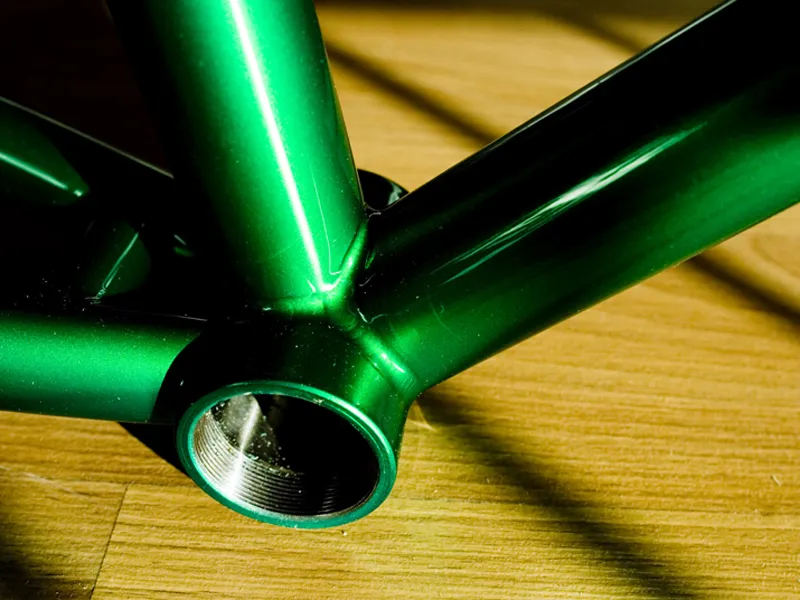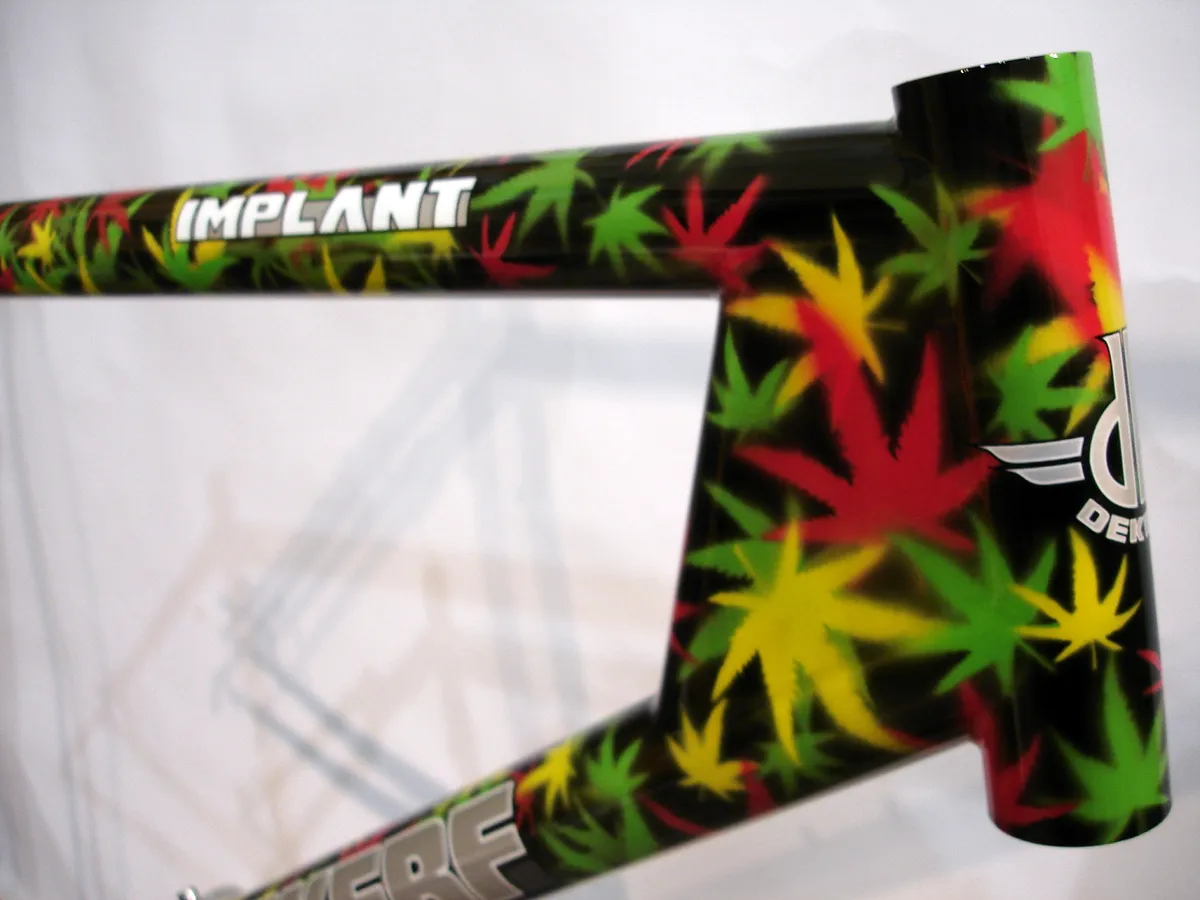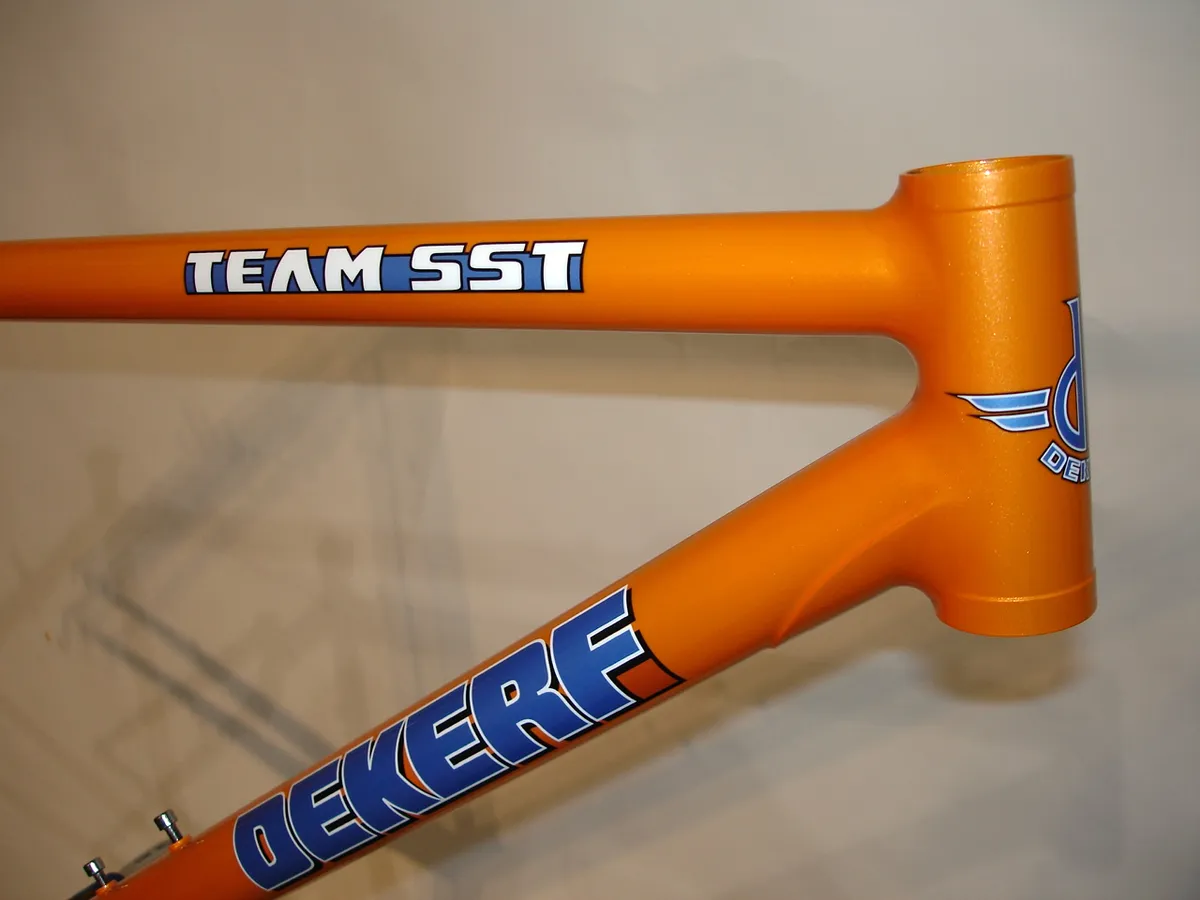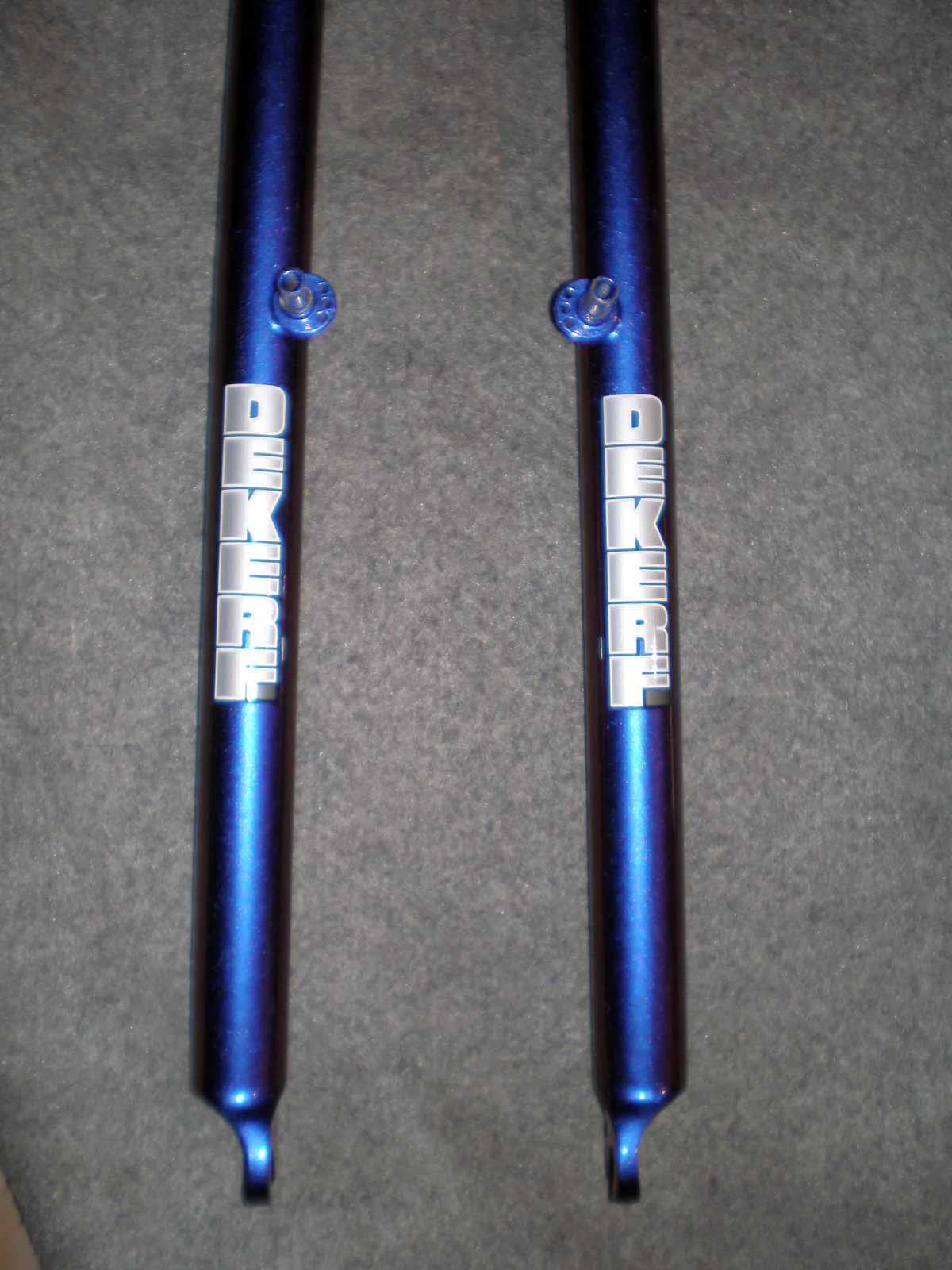I recently chewed the fat with one of my all time heroes. Chris cut his teeth working for Rocky Mountain, but went out on his own in 1989 to create one of the most highly regarded brands in the business. Dekerf hardtails are renowned throughout the world as works of complete perfection and are on the wish list of most cross country racers and trail riders. Chris also makes beautiful road and cross bikes that equally have a huge following.
For me, wanting a Dekerf frame is up there with craving a Saville Row handmade suit, or a classic sports car. The frames are so well made that they may even outlive their owners and cause family arguments down the line as to who should be lucky enough to inherit them! Amazingly, Chris almost downed tools last year, only to have a change of heart due to the sheer weight of support from the retail and bike buying public.
Bikeradar: How did you get into framebuilding, and how important is handmade design to you as a philosophy?
Chris Dekerf: I learned to make things by hand from a master craftsman, my father. There is a great value in learning things from others as you not only build skills, but you can also build a relationship of trust and respect from the process. Applying those skills to bicycles was a natural for me, as from a very young age I had a passion for not only riding them, but going places with them. At 14, I somehow managed to talk my parents into letting me go on a solo one month bike tour from Vancouver out to and through the Canadian Rocky Mountains. It was a 2000 mile adventure extraordinaire! That trip changed who I was. I got into racing shortly thereafter and working in the bike industry to support myself just seemed obvious.
Then when the opportunity came to get into frame building, my passions for building things by hand, and the actual bicycle frame, meshed for good. I was very fortunate again to learn from a veteran British frame builder who had 30 years of experience under his belt. He was a bit of a 'crotchety' old man at times, but for some reason we tolerated each other and he taught me the good, the bad, and ugly of frame building - old school!
Somewhere in there I also worked for a month in a Japanese production frame factory. I had my own welding bench in the row with the rest of the other workers. We started work when the bell rang at 7:00 am, and except for some tea and a delivered lunch, basically didn't put the tig torch down until the bell rang again at 6:00pm. Sometimes the smoke and fumes in that shop were so thick that I couldn't see the 30 feet from my bench to the far wall! I came to learn what real production was, and that it was to be avoided if at all possible. Then at the age of 24, and 3 years after I first started in frame building, I set up my own shop; it was October 15th 1989. I've been at it for over 18 years now. I've built literally thousands of frames. In one year in the early days, when we still did some OEM production work for other companies, we built almost 2000 frames in one year! We don't do that kind of work any more, but I would venture to say that there are very few builders in North America that have the hours on the shop floor that I do.
The great thing about what I do is that the vast majority of the frames I make are custom built for a specific customer. This means that I can design the frame in every detail to meet, and hopefully exceed, the customer’s expectations. Every angle, every millimetre, every tube, and every piece right down to the paint is chosen for that specific customer. This, combined with my 20 years of experience and attention to aesthetics and detail, produce a product that you could never get in an off-the-shelf production bike.
You almost stopped manufacturing last year. What led you to consider making the decision to down tools? And what made you change your mind?
I reached a point a while back when I was asking myself if being a frame builder would be my career for my whole life, or was the 20 years I’d been doing it enough. I have never been the kind of frame builder that was satisfied with the idea of being the ‘local builder.’ I had reached a point where the energy needed to continue to drive the brand and business internationally was getting tiresome. I thought perhaps it was time to make a change.
I suppose I was asking myself, "after you've built a few thousand frames, do you simply keep turning the pages and build a few more thousand?" What I came to realise after seriously considering that question is that yes, I do want to continue doing this. The trick is not to stagnate. I came to realise just how gratifying building these frames really is. The huge amount of customer and industry support I received to keep going, as well, was truly amazing.
These realisations have helped me get out of a bit of a rut, and since then the new ideas and designs seem to be flowing like a river. It's great! The goal now is to build on the reputation from all those years and turn this company into what it should be; a world leader in the high end of bicycles. It feels like I'm starting this business over again. A new beginning. We'll see how it goes.
You have a new business partner in Michael Golinski. What do you hope Michael can add to the company?
Having Michael Golinski join the company is a great strategic move for Dekerf. Michael brings to the table a proven track record of sales and marketing with his past accomplishments with Spot Brand. I bring to the table the design and manufacturing skills. With the company’s long standing reputation worldwide, combined with the recent market upsurge for handmade bikes, the groundwork is now set to take Dekerf products to the next level.
You have been quoted as saying that the only way to understand what the customer wants is to get out there and ride yourself. How often do you get to ride, and what sort of style do you prefer?
Perhaps I have been doing this too long as I honestly don’t remember saying that! That being said, riding bikes has always been a big part of my life. Most of my history in riding has been on the road in touring, racing, and in recent years simply for pleasure and the social aspect. I have also done a lot of off-road riding over the years, although I’ve always been a cross country type rider much more than a jumper or downhiller.
Everyone imagines Canadian mountain bikes to be built for gravity riding. Are you staying firmly in the cross country camp, or have your British Columbian peers inspired you to also make all mountain and gravity type bikes?
The history of the Dekerf brand is built upon lightweight, cross country bikes. To this day, if a person is considering a top level cross country hardtail, it’s likely a Dekerf will be on their shortlist. For these reasons, I’m confident those types of bikes will remain a big part of the Dekerf offerings.
This being said, I have some new designs that are just coming out now for the road and cross markets. Most of the interest in these new frames has been in titanium but we’ve been doing some steel as well. I think once people start seeing these new frames, we’re going to be building a lot more of them.
Any news on your planned Full Suspension bike, the Dekerf FS?
For the time being, the new Dekerf Full Suspension design is on the back burner. There is a new design that has been done and a prototype was 80% completed but then production demands in other areas forced me to shelve the project. There are no immediate plans to revive the project.
You work exclusively in steel and titanium. Do you have a preference? Any plans to work in carbon in the future?
Right now I’m doing about 50/50 steel and Ti. Each of these materials has their advantages, depending on their use. Lately though, I have been enjoying the challenges and new design options I’ve been working on with Titanium.
I do have some carbon tubing here and will be doing some prototyping soon, but once again, production demands are keeping me busy for the time being.
Can you tell us about the Tuning Fork? How did it come about, who is it for, and why should we buy one?
People have been asking us to produce a rigid fork for almost as long as we have been building frames. The tuning fork is designed to provide super direct steering through what most would consider to be a fairly rigid, rigid fork. The look of the fork is both beefy, yet elegantly finished. The fork blades are custom made for us by Reynolds out of 853. The crown assembly uses our trademark interlocking pierced design to create an incredibly strong fork that aesthetically ties in perfectly with the rear end of our frames. The top caps of the blades have masked off little Dekerf logos in polished stainless steel as a finishing touch.
You’ve had some pretty loud colour schemes over the years. Which is your favourite?
My favorite paint schemes almost always involve nice bright ‘Candy’ colours and intricate masking details. The original Dekerf Emerald Green or Tangerine still remain as some of the nicest colours you can put on a frame.
What’s the best kept secret trail in British Columbia, or in Canada as a whole?
Although I used to be an expert on the local trails, in recent years my riding has been mostly on the road. One of the great things about Vancouver is we have the ocean on one side, the North Shore mountains on another, and the Fraser Valley to the east. On the coast side we’ve got the rides out to Horseshoe Bay, Squamish, or Whistler. On the North Shore there are two 3500’ climbs up Mount Seymour or Cypress Bowl. And, out the Valley are some amazing winding low traffic roads that take you on hundred plus mile loops.
